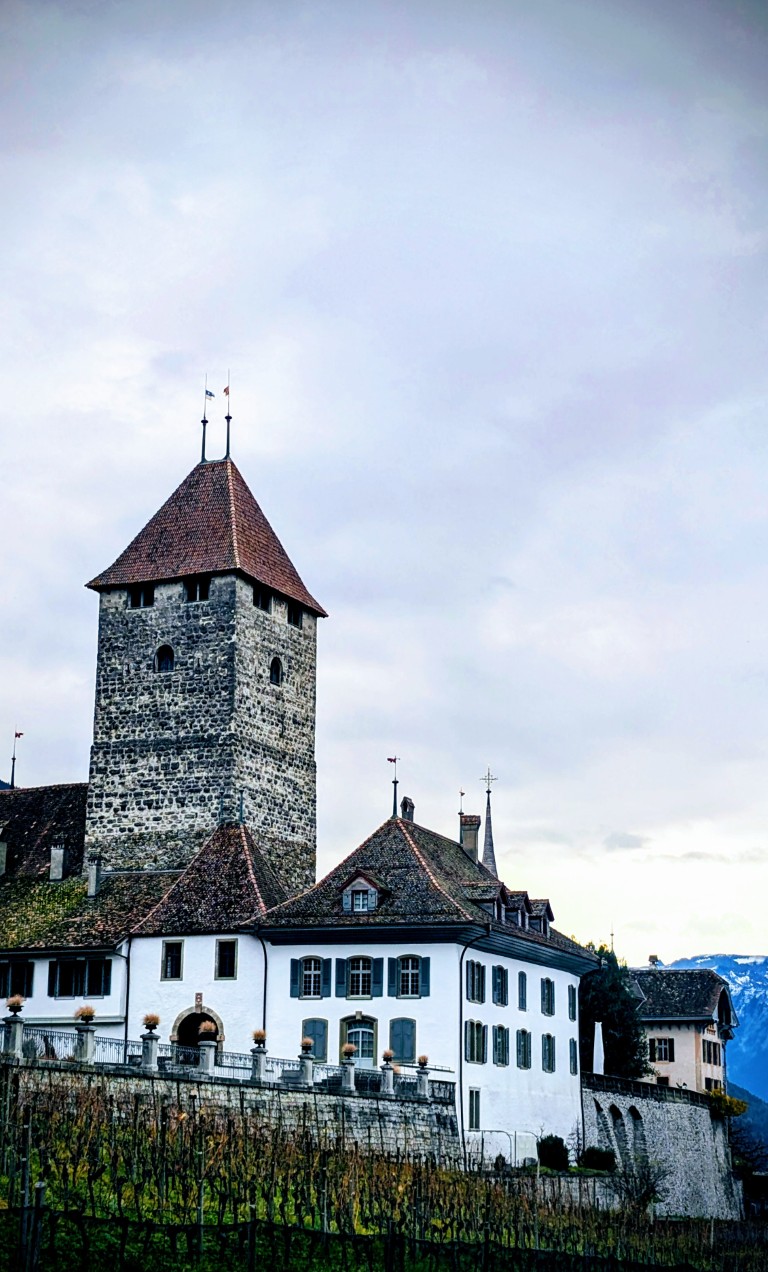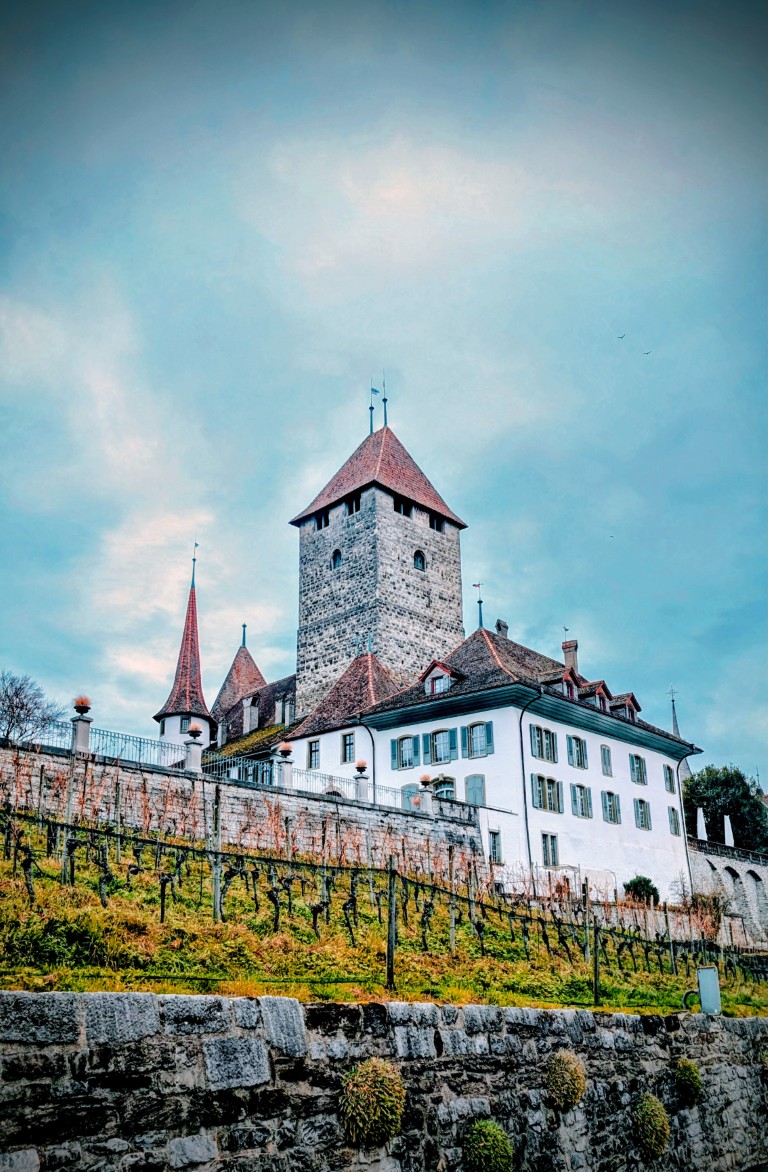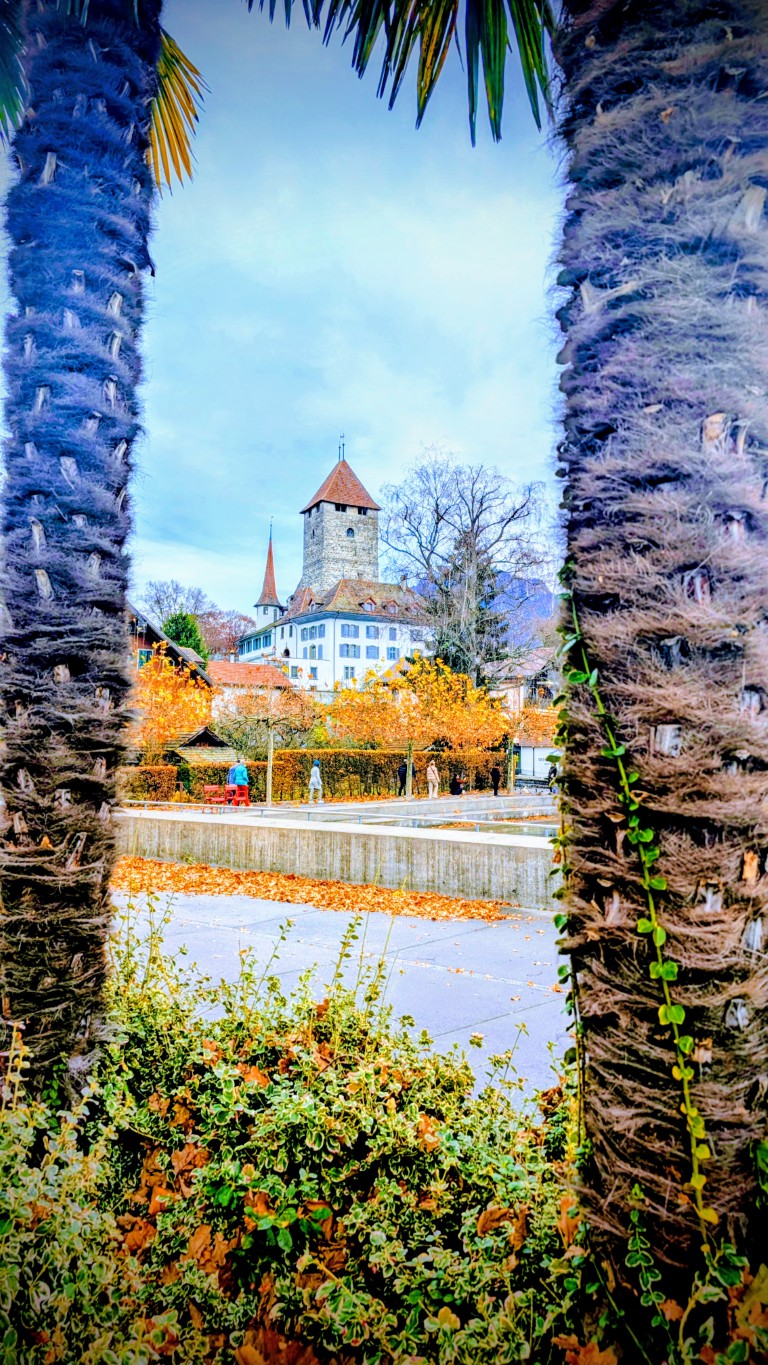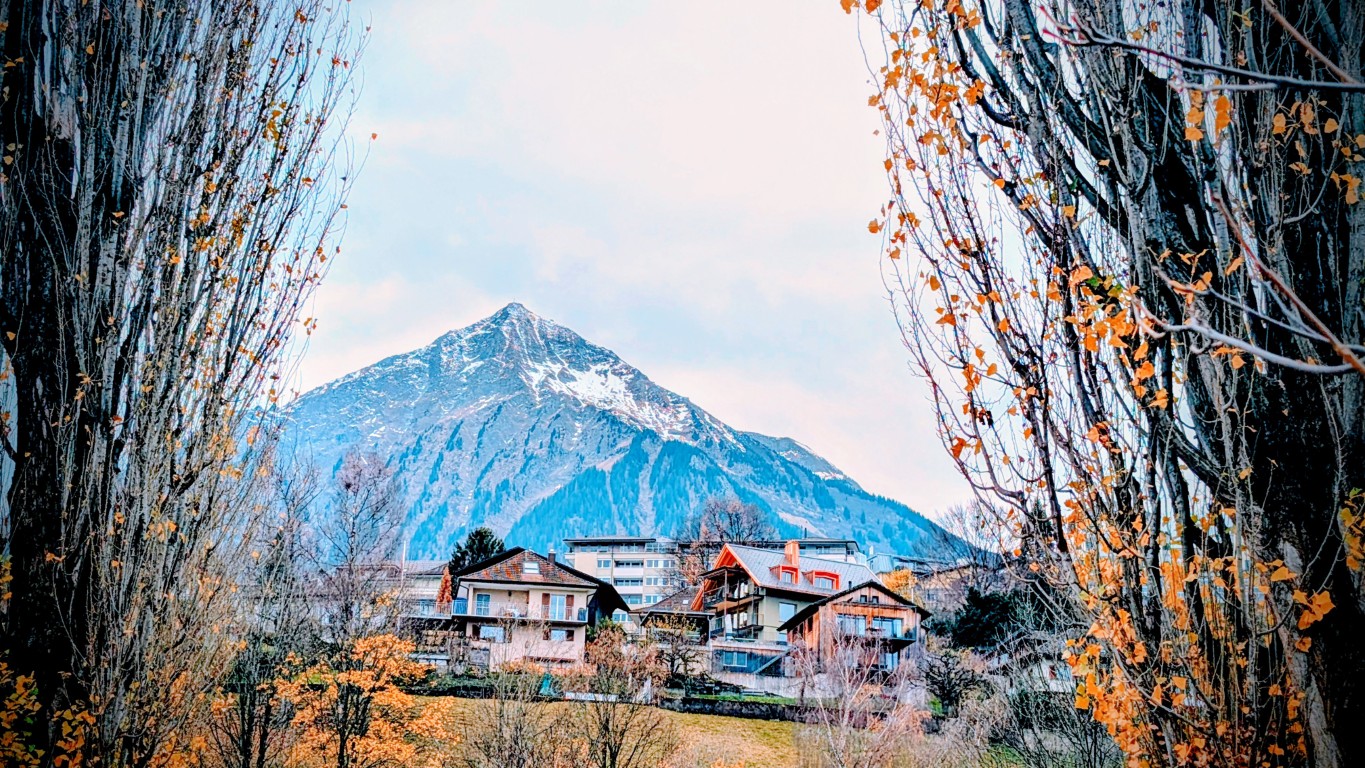Above the turquoise waters of Lake Thun rises one of the most impressive architectural monuments in the Bernese Oberland: Spiez Castle. A place where almost a thousand years of architectural history, old noble families and surprising legends intertwine – and which to this day transports its visitors into its own tranquil world.
A residential tower with history
The castle's distinctive tower is often interpreted as a keep. In fact, it originated as a residential tower – built shortly after 1200, making it one of the oldest surviving parts of the complex. In the late 13th century, a multi-story residential wing was added to it, transforming the castle into a prestigious residence for the first time.
Over the centuries, the castle changed hands several times:
-
first the Barons von Strättligen,
-
from 1338 the von Bubenberg family,
-
from 1516 the influential von Erlach family,
-
and finally, from 1875 onwards, Hermann Karl von Wilke, whose descendants lived in the castle until 1900.
Since 1927, the complex has been part of the Spiez Castle Foundation – and today houses a carefully curated museum offering insights into regional aristocratic culture and early modern living environments.
Baroque splendor: The ballroom
Inside the castle, the ballroom surprises visitors with its exquisite early Baroque stucco work by the Ticino artist Gian Antonio Castelli . Created in 1614, it is among the finest examples of early Baroque interior design in the Bernese Oberland. The ceiling resembles a stone lace – playful, dynamic, yet harmoniously designed.
The Castle Church – A place of kings and chroniclers
Below the castle stands the early Romanesque castle church, formerly dedicated to Saint Lawrence. According to legend, it was founded by King Rudolf II of Upper Burgundy and served as the mother church of Einigen. Its interior still exudes an archaic tranquility.
Here also lies the tomb of Sigmund von Erlach, one of the most influential figures in Bernese military history. Anyone visiting the church quickly senses that this place is older than the castle itself – and probably one of the most mysterious between Lake Thun and Lake Brienz.
The enigmatic overdoor – a 400-year-old mystery
Many visitors enter the castle, look for the ticket office – and overlook the treasure they pass under: an ornate stone overdoor, decorated with the coats of arms of the von Erlach (left) and von Steiger (ibex, right) families. The year 1601 is visible at the very bottom edge.
But how is it that this delicate work is so exceptionally well preserved?
A discovery hidden beneath the plaster
When the foundation took over the castle in 1929, the entire complex was covered in white plaster. There was no sign of the overdoor. It was only during restoration work that specialists noticed something hidden beneath the plaster. Bit by bit, they uncovered the alliance coat of arms – a treasure that had remained hidden for centuries.
But why was it walled up?
To this day, there are no reliable sources. But one explanation seems particularly plausible – and reads almost like a short novel about a castle.
A story of love, rivalry, and representation
On September 24, 1594, Franz Ludwig von Erlach married the noblewoman Salome Steiger in Bern. The couple spent their summers at Spiez Castle – a place intended to reflect their social standing. The ornate entrance hall, adorned with their two coats of arms, underscored their shared ambition and the significance of their union.
But in 1613 everything changed: Salome died after giving birth to eleven children. In the same year, Franz Ludwig remarried – to Johanna von Graffenried, who was twenty years younger.
And here begins the puzzle: Did Johanna have to pass "under" the coat of arms of the first wife every time she entered the castle? Did the new marriage feel overshadowed by the represented past? Was covering the overdoor an act of piety, consideration – or political acumen?
Perhaps Johanna expressed this wish. Perhaps Franz Ludwig himself believed that the visible reminder of his deceased wife could have negatively impacted the new marriage. And perhaps the number of children also played a role: Salome bore him eleven children – Johanna later even 26.
Whatever the actual motivation was: The overdoor was bricked up – and its secret locked away for centuries.









